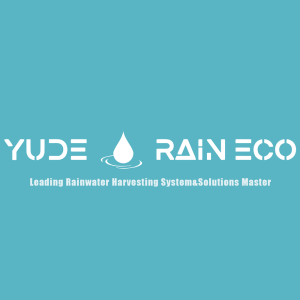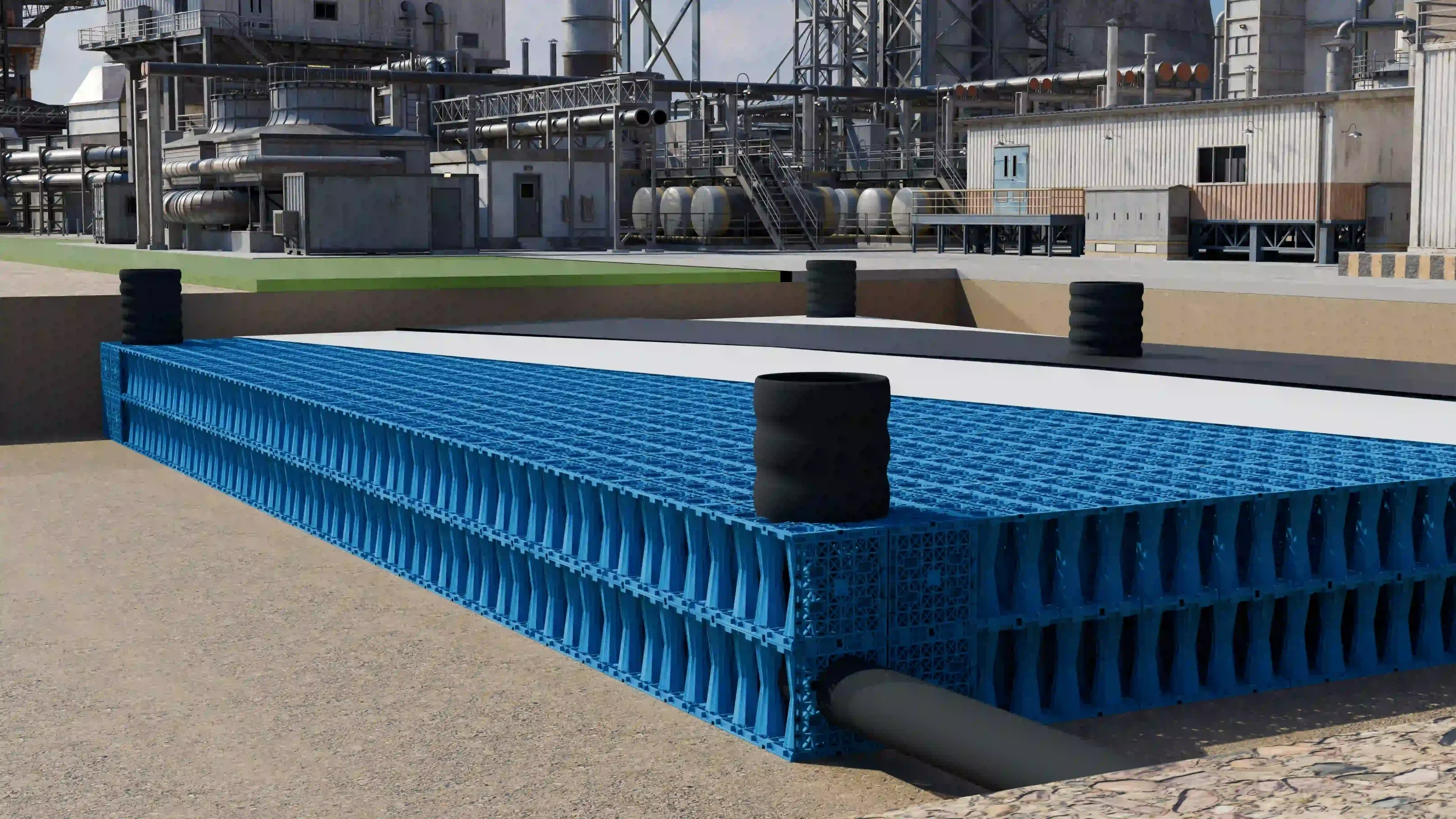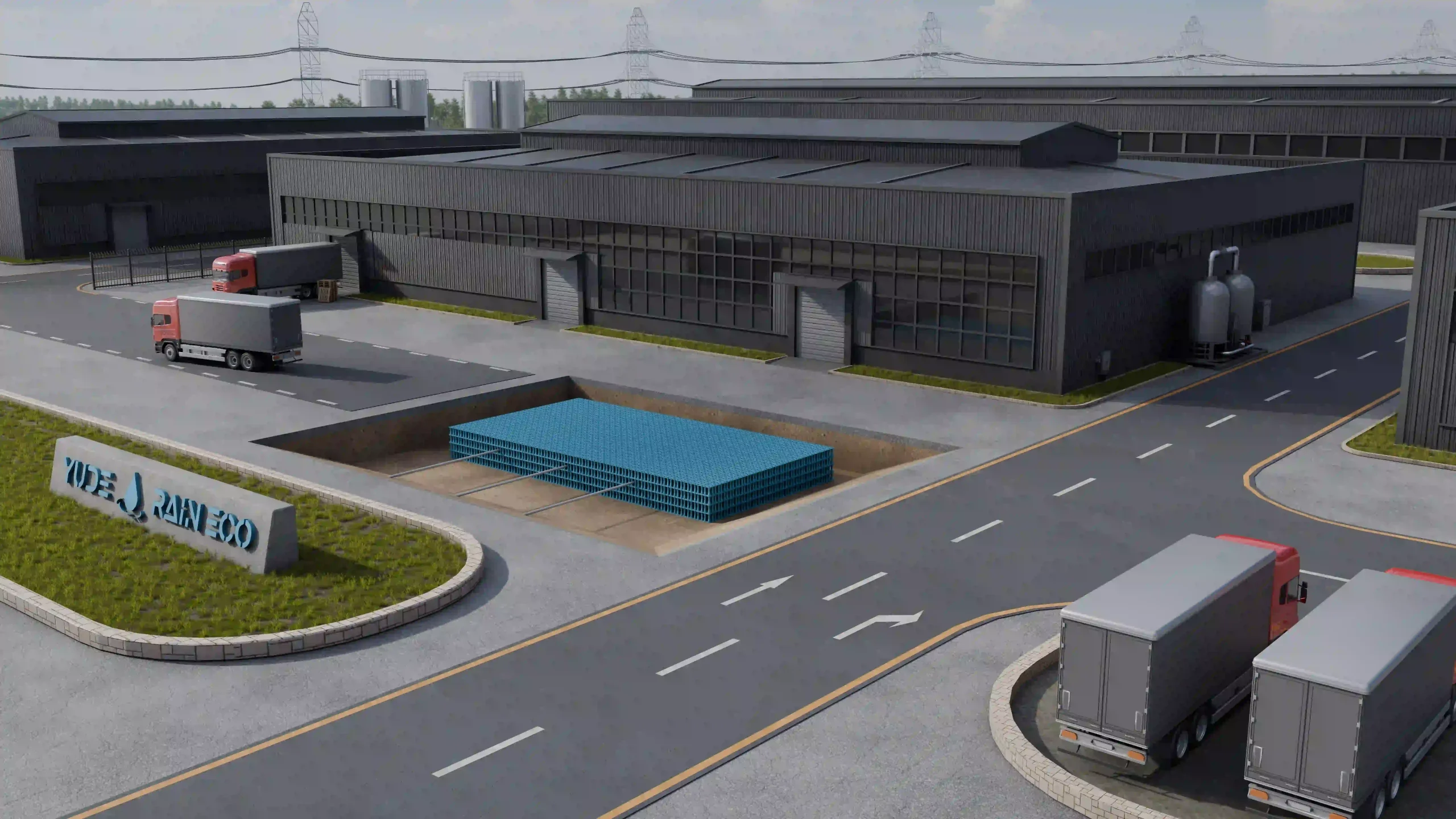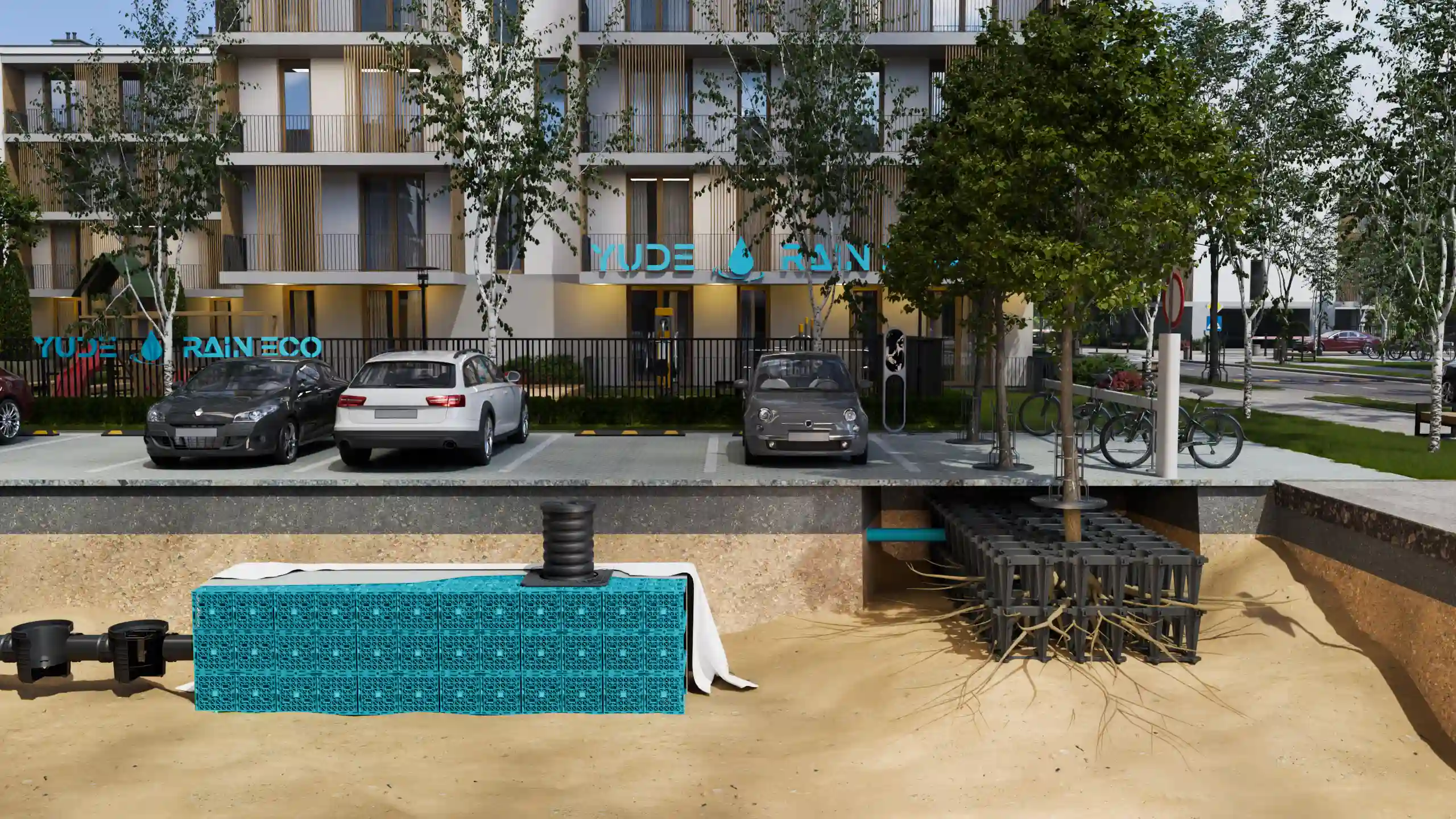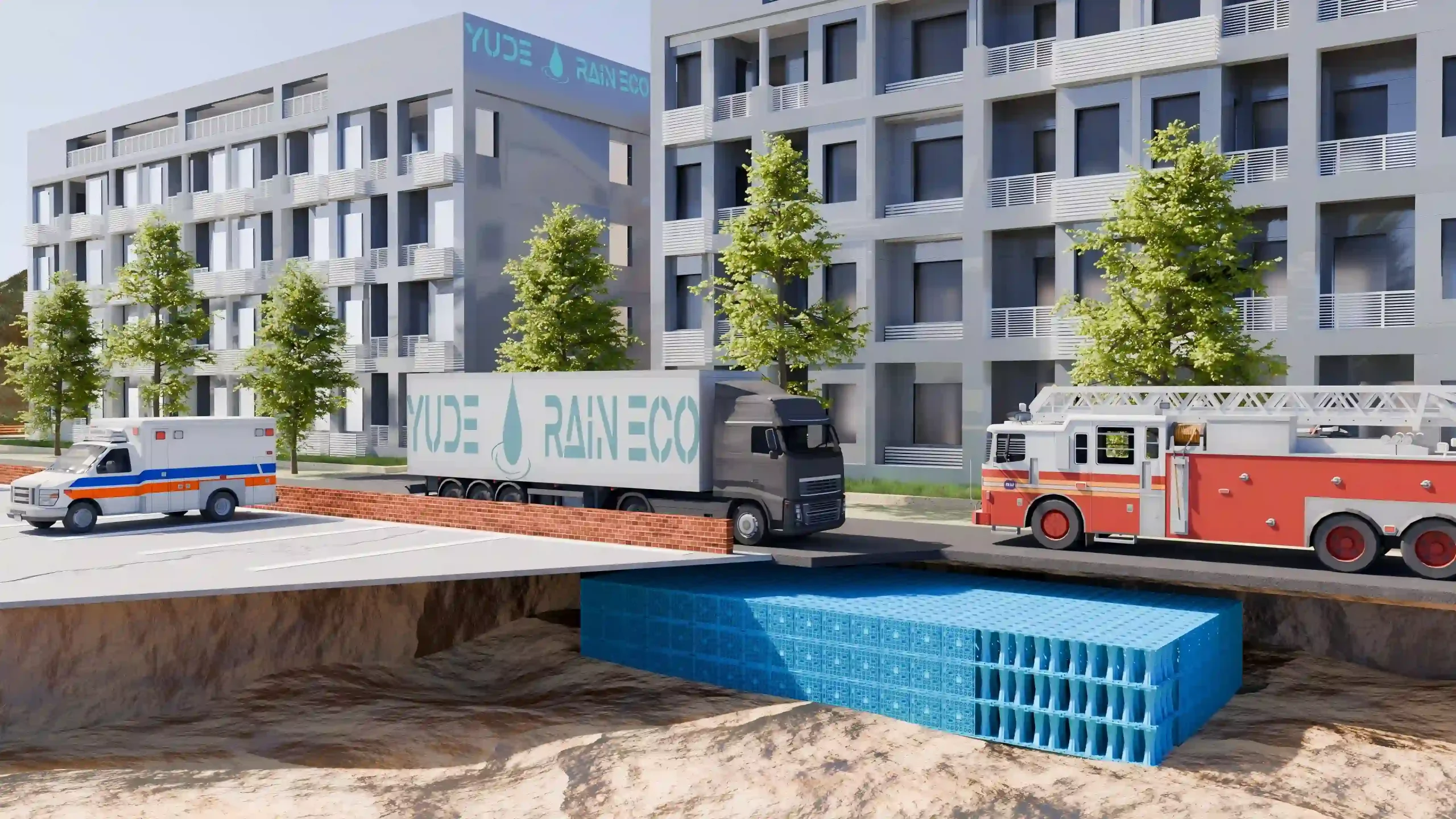As urban development continues to grow and environmental challenges like water scarcity and climate change become more pressing, the question of whether to install underground rainwater harvesting systems in buildings has gained importance. Rainwater harvesting offers significant advantages for both the environment and property owners, but is it worth the investment? In this article, we will explore the reasons for installing these systems, the risks of not installing them, and the potential long-term benefits, especially when paired with modern siphon drainage systems. We will also cover the installation process, the lifespan of these systems, and maintenance guidelines. This comprehensive analysis will help building owners, developers, and architects make informed decisions.
1. Why Install Rainwater Harvesting and Siphon Drainage Systems in Buildings?
Rainwater harvesting systems, especially underground ones, have become essential components of sustainable building design. When combined with siphon drainage systems, they create an efficient water management solution that benefits both the environment and the building owner.
Hazards of Excessive or Prolonged Rainfall on Buildings
Excessive rainfall poses several risks to buildings, particularly in urban areas where impermeable surfaces like roads and roofs limit natural water absorption. The risks include:
- Flooding: Prolonged heavy rainfall can overwhelm drainage systems, leading to localized flooding that damages building foundations, basements, and even ground-level structures. According to a report by the U.S. Federal Emergency Management Agency (FEMA), water damage from flooding is one of the most costly repairs for buildings, often requiring substantial remediation.
- Foundation Erosion: Excessive rainwater that is not managed properly can seep into the soil around the building, causing the soil to erode or swell, destabilizing the foundation. The American Society of Civil Engineers (ASCE) warns that poor water management can lead to serious structural damage over time.
- Waterproofing Failure: Buildings designed without adequate rainwater drainage can experience water infiltration through walls, roofs, and windows. Over time, this can degrade waterproofing materials, leading to leaks and water damage within the building’s interior.
- Mold and Mildew Growth: Excess moisture due to inefficient rainwater management can lead to mold and mildew growth inside buildings. This is not only a structural problem but also a significant health hazard.
The Role of Climate Resilience in Building Drainage Design
With more frequent and severe storms brought on by climate change, traditional drainage systems are no longer sufficient. Rainwater harvesting combined with siphon drainage represents a climate-resilient solution that not only reduces urban flood risk but also enhances a building’s capacity to withstand extreme weather. In cities like Melbourne and Rotterdam, such systems are being encouraged in climate adaptation frameworks as part of future-proof building design.
Case Study 1: The Edge, Amsterdam
The Edge, often considered one of the most sustainable office buildings in the world, incorporates an advanced underground rainwater harvesting system. This system has a capacity of 50,000 liters and collects rainwater from the building’s roof. The collected rainwater is used for toilet flushing and irrigation, significantly reducing the building’s reliance on municipal water supplies. The Edge is a model for how modern buildings can integrate rainwater harvesting to address challenges like flooding and water conservation while maintaining structural integrity.

2. Benefits of Underground Rainwater Harvesting Systems for Buildings
Underground rainwater harvesting systems provide a multitude of benefits to both residential and commercial buildings. From environmental sustainability to financial savings, these systems offer an array of advantages that make them a smart investment.
Flood Prevention
One of the primary benefits of installing an underground rainwater harvesting system is flood prevention. By capturing and storing rainwater that would otherwise contribute to stormwater runoff, these systems reduce the risk of flooding in urban areas. According to the U.S. Environmental Protection Agency (EPA), stormwater runoff is a major cause of urban flooding, and managing this runoff through harvesting systems is one of the most effective solutions.
Siphon drainage systems further enhance flood prevention by creating an efficient and rapid drainage process. Unlike conventional drainage systems, which rely on gravity and can become overwhelmed by heavy rainfall, siphon systems use negative pressure to move large volumes of water quickly and efficiently, reducing the risk of overflows and backups.
Water Cost Savings
Rainwater harvesting also contributes to significant cost savings by providing a free, renewable source of water for non-potable uses, such as irrigation, toilet flushing, and even cooling systems. According to the World Bank, water scarcity will drive up water costs globally in the coming decades, making water-efficient systems like rainwater harvesting critical for reducing operational expenses. Buildings that install these systems can save 30-50% on their water bills, depending on the building’s water needs and the local climate.
Case Study 2: 22 Bishopsgate, London
22 Bishopsgate, one of London’s most iconic skyscrapers, features a 1,500 cubic meter underground rainwater harvesting system. The system is designed to capture and store rainwater for non-potable uses, such as HVAC cooling and toilet flushing. The building’s innovative water management system helps reduce its overall water demand by nearly 40%, making it a key example of how high-rise buildings can integrate sustainable water solutions to enhance both operational efficiency and environmental responsibility.

Compliance with Green Building Certifications
Rainwater harvesting systems are often essential to meet certification criteria for green buildings. LEED and BREEAM frameworks award points for water reuse, runoff reduction, and sustainable site planning. By integrating underground tanks and siphon drainage, building developers can meet water efficiency benchmarks and achieve higher sustainability ratings, attracting environmentally conscious tenants or investors.
Building Protection and Longevity
Water is a building’s worst enemy when it comes to structural integrity. Proper management of rainwater through underground storage tanks and siphon drainage systems helps protect buildings from water damage, preserving their structural integrity over the long term. The American Institute of Architects (AIA) notes that water infiltration and poor drainage are responsible for many building failures, and rainwater management systems can extend the lifespan of a structure by reducing wear and tear.
3. What Are the Differences Between Installing and Not Installing Rainwater Harvesting and Siphon Drainage Systems?
Buildings That Install These Systems:
- Flood Prevention: With underground rainwater storage and siphon drainage, these buildings are better protected from flooding and stormwater issues.
- Cost Savings: Significant savings in water costs, particularly in regions where water is expensive or scarce.
- Long-Term Durability: Better protection of the building’s foundation and structure, leading to fewer maintenance issues and longer building lifespan.
- Environmental Impact: Buildings that install rainwater harvesting systems contribute to water conservation efforts and reduce their environmental footprint.
Buildings That Do Not Install These Systems:
- Flood Risk: Higher susceptibility to water damage during storms and heavy rainfall.
- Increased Water Costs: Complete reliance on municipal water supplies for all uses, resulting in higher water bills.
- Structural Degradation: Potential for foundation erosion, water infiltration, and mold growth, leading to more frequent repairs and maintenance costs.
- Higher Environmental Impact: Increased pressure on local water sources and higher consumption of treated potable water for non-potable purposes.
Case Study 3: Gardens by the Bay, Singapore
Gardens by the Bay is a landmark project in Singapore known for its sustainability initiatives. The underground rainwater harvesting system in the facility has a capacity of 2 million liters, collecting rainwater for irrigation of the park’s extensive gardens and landscaping. The system also prevents flooding by managing excess stormwater, a critical feature in a city known for its heavy rainfall. Gardens by the Bay showcases the scalability of underground rainwater harvesting systems and their ability to serve large, public spaces while contributing to environmental conservation.

Design Considerations for High-Rise and Industrial Buildings
High-rise buildings and industrial facilities require larger-capacity rainwater harvesting systems with pressurized delivery, redundancy in pumping, and durable underground tanks. Modular geocellular tanks and siphon drainage can be combined to serve rooftop HVAC systems, cleaning facilities, or irrigation. Engineering calculations must also factor in wind loads, pump head pressure, and rooftop drainage flow rates to ensure seamless integration into complex infrastructure.
4. Benefits & Advantages of Yude Underground Rainwater Harvesting System
1. Flood Prevention & Urban Resilience
Yude’s system effectively captures and stores roof and surface runoff during heavy rainfall, reducing the risk of flooding in urban areas. When paired with a siphonic drainage system, it enables rapid drainage and alleviates pressure on municipal stormwater infrastructure. It’s especially valuable in regions prone to intense storms and climate change-related weather events.
2. Water Savings & Cost Reduction
Collected rainwater can be reused for non-potable applications such as toilet flushing, landscape irrigation, and cooling systems. This helps reduce reliance on municipal water by 30–50%, significantly cutting water bills—especially in commercial or high-consumption buildings.
3. Space-Efficient & Aesthetic Integration
Installed underground, the system preserves valuable surface space and does not interfere with landscaping or functional areas. It can be implemented beneath driveways, parking lots, parks, and courtyards—ideal for dense urban settings or high-end developments.
4. Modular & Scalable Design
Yude’s system uses high-strength polypropylene modular crates, available in 32t, 45t, and 60t load-bearing versions. These units are easy to transport and install, with flexible configuration to match various site sizes and water capacity requirements.
5. Structural Protection & Building Longevity
By managing runoff and preventing water infiltration around foundations, the system protects buildings from soil erosion, basement flooding, and long-term structural degradation. It minimizes risks like mold, mildew, and concrete weakening.
6. Supports Green Building Certification
The Yude system aligns with global green building standards such as LEED (USA), BREEAM (UK), and SuDS (EU). It helps projects gain water efficiency credits and comply with sustainable urban drainage regulations, making it a valuable asset for developers and architects.
7. Turnkey Solutions & Engineering Support
Yude provides a one-stop solution—from design and product supply to installation guidance and system integration. Optional components include siphonic roof drainage, filtration units, overflow control, and smart monitoring. This ensures reliable performance with simplified installation and maintenance.
8. Eco-Friendly Materials & Recyclability
The system is made of recyclable, environmentally friendly materials that support low-carbon construction goals. Its sustainable design contributes to long-term environmental stewardship and green infrastructure initiatives.
Ideal Applications
-
Commercial buildings and malls
-
Residential communities and villas
-
Industrial parks and warehouses
-
Schools, hospitals, and public facilities
-
Urban roads, plazas, and underground parking areas
5. How to Install a Proper Underground Rainwater Harvesting System
A proper rainwater harvesting system requires careful planning, from design to installation, to ensure it meets the building’s water management needs and local regulations.
- Site Analysis: The first step is a thorough analysis of the site, including the roof area, local rainfall data, and the building’s water usage requirements. Yude Rain Eco will assist you in calculating your building’s average water demand for irrigation, toilet flushing, and other non-potable water uses to determine and recommend the appropriate storage tank size.
- System Design: The design must integrate the rainwater collection system with the building’s existing plumbing and landscape irrigation systems. Additionally, the system should include filtration and treatment options to ensure water quality for the intended uses.
- Regulatory Compliance: It’s crucial to check local regulations regarding rainwater harvesting. In some areas, permits may be required for installing large storage tanks or siphon drainage systems.
6. How Long Does an Underground Rainwater Harvesting System Last?
The lifespan of an underground rainwater harvesting system depends on the materials used, the quality of installation, and ongoing maintenance. High-quality polypropylene or concrete storage tanks can last for over 50 years with minimal maintenance, according to the International Rainwater Harvesting Alliance (IRHA). Pumps and filtration systems typically have shorter lifespans, ranging from 10-20 years, and may need to be replaced or upgraded over time.
Cost-Benefit Analysis and ROI of Rainwater Harvesting Systems
The return on investment (ROI) for underground rainwater systems is influenced by water pricing, local rainfall volume, and system scale. For example, in areas with high water tariffs and seasonal rainfall, payback periods can be under 7 years. A mid-sized commercial building in California saved over $18,000 annually by using stored rainwater for HVAC and toilet flushing. Even in regions with moderate rainfall, long-term utility savings, reduced flood insurance costs, and tax incentives justify the initial investment.
Are the Benefits Worth the Extra Construction Costs?
The initial investment in an underground rainwater harvesting system can be significant, but the long-term benefits often outweigh the costs. A study by the Global Water Research Coalition (GWRC) found that the payback period for rainwater harvesting systems in commercial buildings is typically between 5 and 10 years, depending on the size of the system and local water costs. The combination of flood prevention, water savings, and building protection makes it a worthwhile investment for many property owners.
7. Maintenance Q&A
- Q1: How often should the underground rainwater harvesting system be inspected?
- A: It’s recommended to conduct inspections annually, although buildings in areas with frequent heavy rainfall may require more frequent checks. During inspections, focus on checking for leaks, sediment buildup in the tank, and proper functioning of pumps and filters. Also, inspect the siphon drainage system after major storms to ensure there are no blockages or damage.
- Q2: How often should the filters be replaced or cleaned?
- A: Filters in the system should be cleaned or replaced every 6 to 12 months, depending on the water quality and usage. Pre-filtration systems like gutter guards and first-flush diverters should be cleaned more frequently to prevent debris from entering the storage tank.
- Q3: What maintenance do the pumps require?
- A: Pumps should be inspected regularly for any signs of wear, leaks, or reduced performance. Ensure that all moving parts are functioning properly, and replace any worn or damaged components. The pump’s life expectancy varies but generally lasts around 10-20 years, depending on use and maintenance.
- Q4: What should be done if sediment builds up in the storage tank?
- A: Over time, sediment may accumulate at the bottom of the tank. To maintain water quality and system efficiency, it’s important to remove this sediment periodically. Sediment removal should be done every few years, depending on the amount of debris that enters the system.
- Q5: How can I ensure the siphon drainage system continues to function properly?
- A: The siphon drainage system should be monitored, especially after heavy rain, to ensure it is free from blockages. Regularly check for debris in the drainage pipes and inspect the siphon mechanisms to ensure they are creating the proper negative pressure needed for efficient drainage.

- Q6: Do underground tanks require any specific protection against freezing?
- A: Underground tanks are typically installed below the frost line, which protects them from freezing. However, in extremely cold climates, additional insulation or frost protection measures may be needed for the pipes and pumps. Always consult with a professional to determine the best protection methods for your specific region.
Automation and Smart Monitoring for Maintenance Efficiency
Modern rainwater systems can be equipped with IoT-enabled sensors to automate tank level tracking, leak detection, and system diagnostics. Smart siphon drainage monitors ensure pressure balance and flow performance in real time. These tools reduce human error, lower maintenance costs, and provide data logs that assist facility managers in scheduling proactive upkeep. Yude Rain Eco offers integration-ready systems for smart infrastructure projects.
Are You Ready to Invest in Sustainable Water Management for Your Building?
Yude Rain Eco specialize in designing and installing advanced underground rainwater harvesting and siphon drainage systems that meet your building’s unique water management needs. Whether you’re looking to prevent flooding, save on water costs, or reduce your environmental footprint, we have the expertise to help you achieve your goals.
Contact us today for a free consultation and learn how our systems can protect your building while promoting sustainability.

